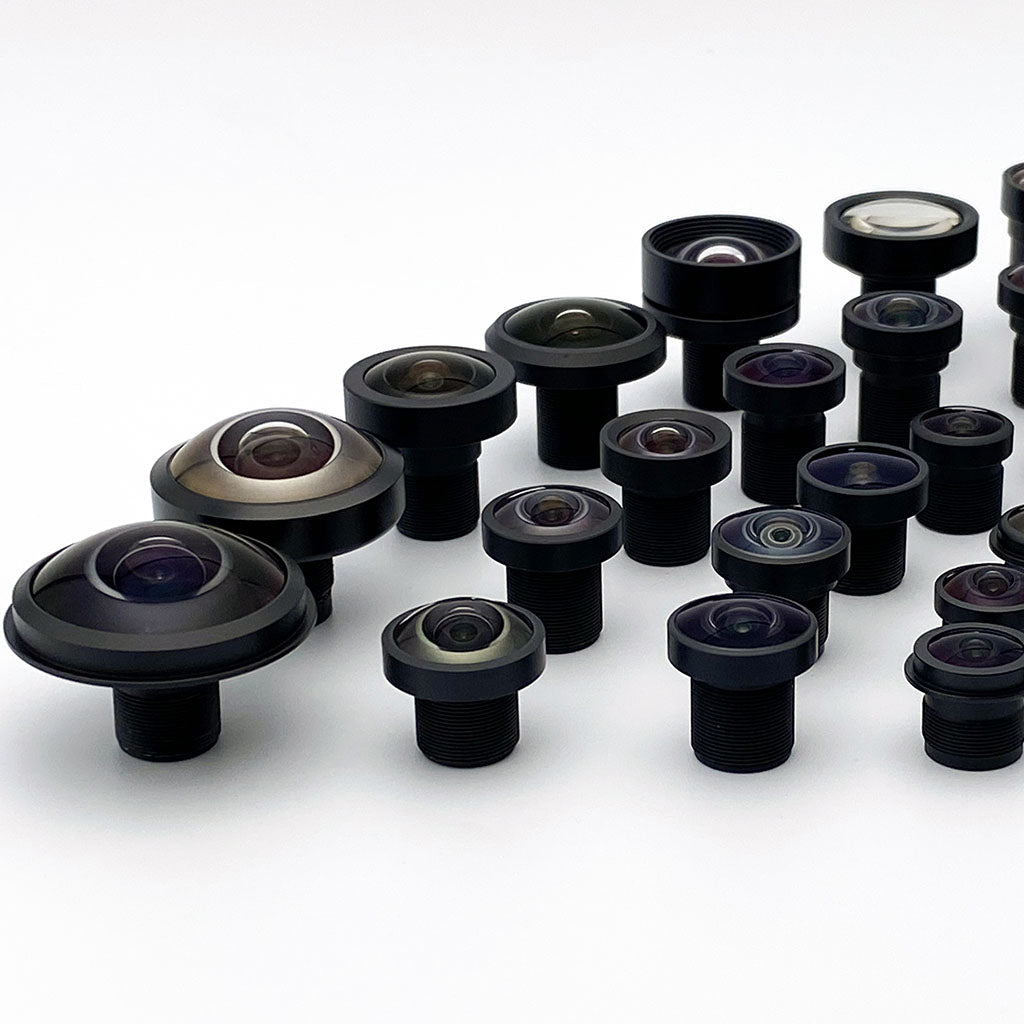How Do You Calculate Camera Angle of View?
Camera angle of view (AOV) describes the angular extent of a scene visible through the lens. The calculation uses the arctangent function relating object size to viewing distance. Define what the camera must see, then select optics accordingly.
The visualizer above shows this geometry in real-time. As you change inputs, the angle between the camera and object edges updates, demonstrating how FOV changes with object size and distance.
How Do You Calculate Focal Length from Sensor Specifications?
Once you know your target FOV, calculate the required lens focal length from your sensor's pixel dimensions. First compute sensor size from pixel count and pitch, then apply the inverse FOV formula.
Finding Your M12 Lens
After calculating your required focal length, browse our M12 lens collection to find matching options. We stock 200+ M12 lenses from 0.8mm fisheye to 75mm telephoto—most ship same-day from US inventory.
What's the Difference Between AOV and Linear FOV?
Angle of view is measured in degrees and is distance-independent—determined solely by focal length and sensor size. Linear FOV describes actual scene coverage (meters or feet) at a specific working distance.
Convert between them using: Linear FOV = 2 × distance × tan(AOV/2). A 60° horizontal AOV covers 1.15 meters wide at 1 meter distance, or 11.5 meters at 10 meters.
How Does Lens Distortion Affect FOV?
These calculations assume ideal rectilinear projection. Real wide-angle lenses exhibit barrel distortion, capturing more angular content at edges than predicted. Fisheye lenses use entirely different projection models.
For applications requiring precise FOV specification with distortion, use our distortion-aware FOV calculator or consult manufacturer datasheets.
Machine Vision Applications
Inspection systems: Define inspection width and mounting height, calculate HFOV, select lens. Our C-mount lenses suit industrial inspection with global shutter sensors.
Robotics navigation: Wide-angle coverage (120°+) provides situational awareness. Our fisheye M12 lenses reach 185° diagonal FOV for panoramic perception.

